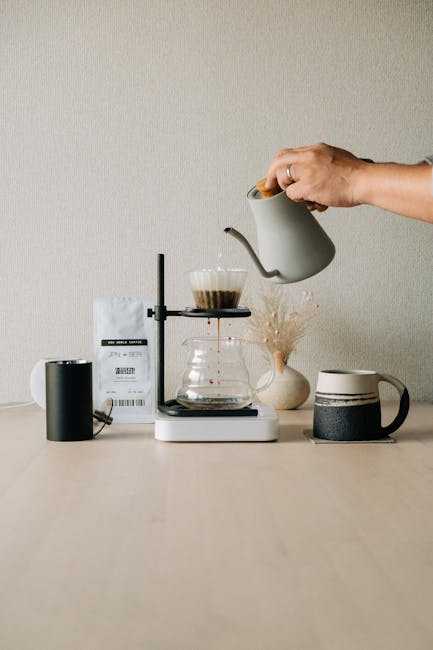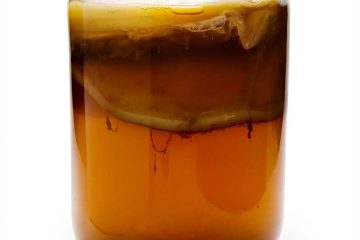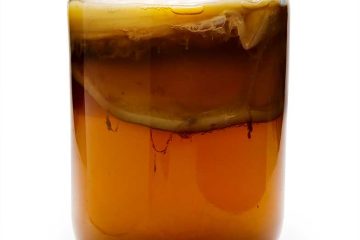kombucha tea temperature

Step into the world of kombucha tea, where temperature plays a crucial role in the delicate dance of fermentation. As we explore the relationship between kombucha and temperature, we uncover the secrets behind achieving that perfect brew. Join us on a journey of flavor, health, and science, as we dive into the fascinating realm of kombucha tea temperature.
Table of Contents
- The Perfect Brewing Temperature for Kombucha Tea
- Maintaining Optimal Fermentation Conditions
- Balancing Flavor Profiles with Temperature Control
- Expert Tips for Monitoring Kombucha Tea Temperature
- Q&A
- The Conclusion

The Perfect Brewing Temperature for Kombucha Tea
When it comes to brewing the perfect batch of kombucha tea, temperature plays a crucial role in determining the outcome of this probiotic-rich beverage. Maintaining the ideal temperature during the fermentation process can make a significant difference in the taste and quality of your homemade kombucha.
For optimal results, aim to ferment your kombucha tea at a consistent temperature range of 75-85°F (24-29°C). This temperature range provides the ideal environment for the symbiotic culture of bacteria and yeast (SCOBY) to thrive and ferment the tea effectively. Remember, consistency is key to achieving a delicious and well-balanced kombucha brew.
Maintaining Optimal Fermentation Conditions
Ensuring the ideal conditions for fermenting Kombucha tea is crucial to yield a flavorful and potent brew. Temperature plays a vital role in this process, influencing the growth of beneficial bacteria and yeast. To maintain optimal fermentation conditions, it’s essential to monitor and control the temperature of your brewing environment.
**Factors to consider when regulating temperature for Kombucha fermentation:**
- Consistent Temperature: Maintain a stable temperature range between 75-85°F (24-29°C) for best results.
- Avoid Extreme Heat: Excessive heat can hinder fermentation and potentially damage the culture, while cold temperatures can slow down the process.
- Use a Thermometer: Invest in a reliable thermometer to accurately monitor the temperature of your brewing vessel.

Balancing Flavor Profiles with Temperature Control
In the world of brewing kombucha tea, achieving the perfect blend of flavors is an art form. Temperature control plays a pivotal role in this delicate dance of taste. By harnessing the power of temperature regulation, brewers can unlock a symphony of flavors that harmonize seamlessly in every sip.Here are some key points to consider when :
- Temperature Fluctuations: Embrace the nuances of different temperatures to bring out diverse flavor notes.
- Cold Brew Magic: Experiment with cold brewing techniques to extract subtle flavors without bitterness.
- Fermentation Finesse: Monitor fermentation temperatures to influence the tanginess and complexity of your kombucha.
- Heat vs. Cold: Understand how heat and cold affect the fermentation process to master the art of flavor manipulation.
| Temperature Range | Flavor Profile |
|---|---|
| 68-75°F | Floral and delicate |
| 76-82°F | Fruity and vibrant |
| 83-88°F | Bold and robust |
| 89-95°F | Spicy and intense |
Incorporate a reliable thermometer into your brewing setup to ensure accurate readings throughout the fermentation process. Place the thermometer away from direct sunlight or heat sources to get a true representation of the brew’s temperature. Regularly check and record the temperature to track any fluctuations and make necessary adjustments to maintain consistency. Embracing a consistent temperature range will result in a high-quality batch of kombucha every time.
Create a dedicated fermentation station in your home to control the environmental factors affecting the brewing temperature. Consider using a heat mat or cooler to regulate the temperature based on the season and ambient conditions. Experiment with different temperature settings to find the sweet spot that yields the best results for your kombucha brews. By mastering the art of temperature monitoring, you’ll elevate your kombucha tea-making skills and produce flavorful, probiotic-rich beverages to enjoy.
Q&A
Q: Why is the temperature important when brewing kombucha tea?A: The temperature plays a crucial role in the fermentation process of kombucha tea. It affects the growth of beneficial bacteria and yeast, ultimately influencing the taste and quality of the final brew.
Q: What is the ideal temperature range for brewing kombucha tea?
A: The ideal temperature range for brewing kombucha tea is between 75°F to 85°F (24°C to 29°C). This range promotes optimal fermentation and ensures a balanced flavor profile.
Q: What happens if the temperature is too high or too low during brewing?
A: If the temperature is too high, it can lead to a faster fermentation process, resulting in a tangier and more acidic brew. On the other hand, if the temperature is too low, fermentation may slow down, prolonging the brewing time and potentially affecting the taste of the kombucha.
Q: How can I maintain the right temperature for brewing kombucha tea?
A: To maintain the ideal temperature for brewing kombucha tea, you can use a thermometer to monitor the temperature regularly. Placing the brewing vessel in a warm, draft-free area or using a heating mat can also help regulate the temperature.
Q: Are there any seasonal variations to consider when brewing kombucha tea?
A: Yes, seasonal variations can impact the brewing process. During colder months, you may need to provide additional heating to maintain the ideal temperature. In warmer months, you may need to monitor the temperature more closely to prevent over-fermentation.
Q: Can the temperature affect the carbonation of kombucha tea?
A: Absolutely! The temperature influences the carbonation levels in kombucha tea. Warmer temperatures can accelerate carbonation, while cooler temperatures may slow down this process. Adjusting the temperature can help achieve the desired level of fizziness in your kombucha brew.




0 Comments